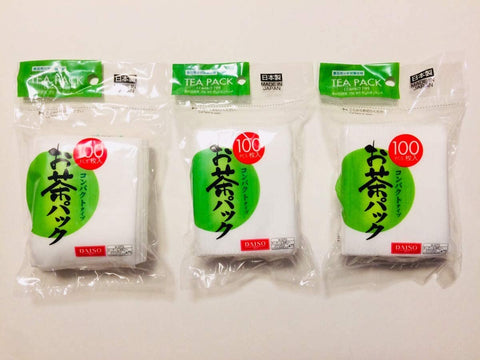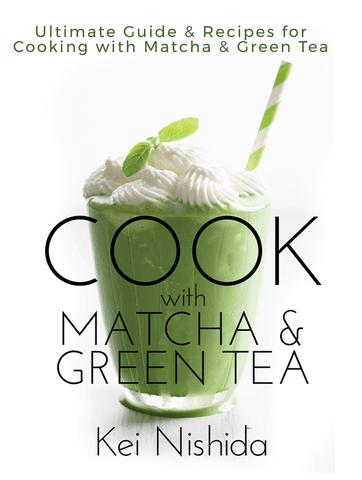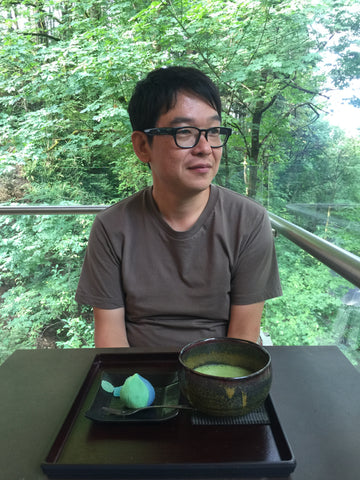-
You can make your own tea bag from loose leaf tea.
Other than using yunomi, my favorite way is to use a tea filter bag and loose leaf green tea. Usually higher grade green tea is available in loose-leaf form and not teabag form. Here is a link to an Amazon to get one of these tea filter bags.
How to Select Japanese Green Tea? - The Expert Advice
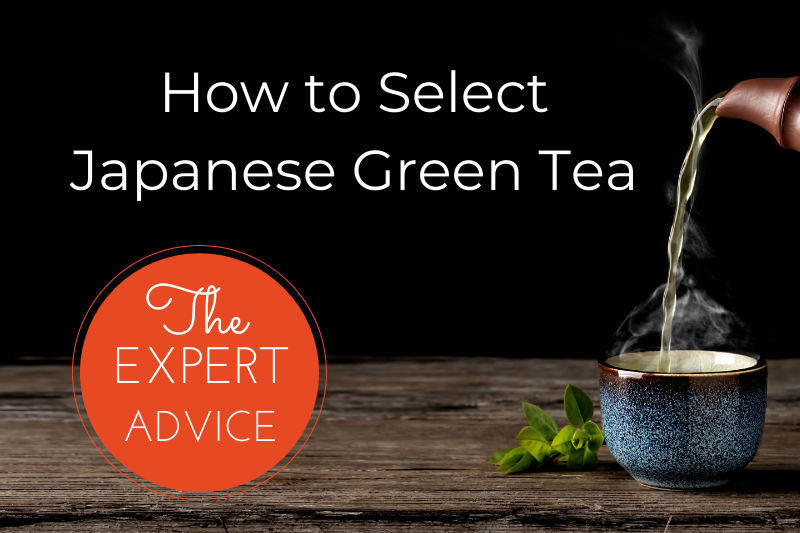
When searching for tea, it can be hard to navigate what works best given your needs.
Let’s narrow our search and focus on selecting Japanese green teas based on your needs and what fits in your life.
Here are few commonly asked questions we get about selecting the right tea for you, and answers to those questions. Hope this list helps you navigate the great world of Japanese tea variety!
- First, the video of this blog post.
- Try our Tea Finder.
- Should I drink tea bags or loose leaf tea?
- Should I drink loose leaf tea or powdered tea?
- Should I drink hot tea or cold tea?
- Should I drink sweet tea or non-sweet tea?
- I am sensitive to caffeine. Is there good Japanese Tea for me?
- Is there good tea for pregnant women?
- Is there good tea for kids?
- Is there good tea for diet?
- Are there any green teas that can help with my allergies?
- Which Japanese Tea is good for cooking? I heard I can bake and cook with green tea, is this true?
- I want the highest grade of tea, what are my options?
- I am confused about the different types of Japanese Tea. What are the differences?
- How to tell if Japanese green tea is good quality?
First, the video of this blog post
This blog post article has been pretty popular, so we made a video out of it. More detail is in the below, but this 6 min short video will give you good overview of each of the questions.
Should I drink tea bags or loose leaf tea?
If you’re used to tea bags than the world of loose-leaf tea may be new to you. As with food, it really boils down to personal preference when it comes to taste.
Many people think that tea bags are of lower quality than loose leaf tea. That is not always true. Click here or link below to find out the answer to the questions.
As you can see in the article above, it depends on the shop you buy from. (Note: All our tea bags products are of the same quality as loose leaf tea.)
-
Ensure the quality of teabag material
Some tea bags are created from particular plastics that leech micro and even smaller nano plastics (source). Additionally, some tea bags contain incredibly high-quality teas and are full of flavors.
Pay attention to what kind of tea bags are being used. If the shop does not disclose it, more likely it is using plastic-type.
(Note: all our tea products use non-plastic tea bag that can be biodegraded - click here for more information about this type of tea bag we use)
Generally speaking, pyramid shape tea sachets will taste better than square shape as it allows tealeaf to open up in the teabag.
-
Teabags are convenient when you want tea quickly
For me, my personal preference is where I am. If I am in the office, I prefer a quick way to brew the tea so I use a teabag.
When I am at home and want to enjoy tea time with my family, I use loose leaf tea and use a teapot.
-
You need a teapot or filter for loose leaf tea.
Unless you are drinking powder form tea, loose leaf tea requires you to have some way to filter out the tea leaf. (Unless you are drinking powdered tea, see below section about powder tea vs loose leaf tea)
The most traditional Japanese way to drink loose leaf tea is by using yunomi or teapot. The below image shows a typical Japanese yunomi teapot. What kind of teapot you use could affect the taste of the tea. This article explains about specific historical teapot from Japan.
Back To Top
Should I drink loose leaf tea or powdered tea?
The most famous form of powdered Japanese tea is matcha although there are other variations of powdered tea as well (click here for a list of powdered tea we carry).
You can click here or below the image to know the detail of the differences between sencha (loose-leaf form) and matcha (powder form).
One question we often get asked is if matcha is healthier than sencha.
Generally speaking, matcha is healthier. Quality is an important word as there are grounded lower quality variants of sencha. Matcha has a number of benefits including helping to lower blood pressure, fighting cancer, boosting metabolism, improving dental health and being rich in antioxidants. For more info please click here or below image.
Back To TopShould I drink hot tea or cold tea?
The simple answer: drink what you enjoy the most!
The common misconception is that a particular tea type can only be brewed hot or cold. Although some tea is meant for cold-brewing, most Japanese tea can be brewed hot or cold.
A surprising fact is that when it comes to health chemicals in tea, cold-brewing tea retains more of the health benefits chemical than hot tea. (This does not mean that hot tea is not healthy, hot tea is still a very healthy drink!)
Personally, I usually keep a jar of cold brew tea in my refrigerator using the below approaches and still drink hot tea when I want.
You can see how you can cold brew Japanese tea by clicking on the images below.
Back To TopShould I drink sweet tea or non-sweet tea?
From a historical point of view in Japan, Japanese tea has not been consumed with sweetener until very recently introduced by outside of Japan. Therefore, if you try to look for sweeten Japanese tea, you do not find many Japanese sources.
This does not mean that Japanese tea does not taste good with sweetness. In fact, there are many ways to sweeten Japanese tea. Please see this article that I listed different ways to sweeten Japanese tea.
In recent years, there are many movent of sweetening tea in Japan, and some tea companies are creating new tea products. I have covered a story here if you are interested in reading more about it.
Here are two popular sweetened Japanese tea we carry on our inventory if you are interested.
Back To TopI am sensitive to caffeine. Is there good Japanese Tea for me?
Many Japanese green teas contain caffeine that may not be ideal for people who are sensitive to caffeine or before settling down in the evening.
Low caffeine Hojicha is available in our store. Japanese farmers focusing on a lower caffeine Hojicha tend to pick the leaves from a more mature harvest in combination with a roasting process that reaches approx.. 200 degrees celsius. The relatively high temperature adjusts the caffeine’s composition.
Unless you want herbal tea, no tea can actually eliminate entire caffeine contents. Please click here or below image if you want to know more about tea and caffeine. I tried to answer all the questions I can answer about this topic.
Back To TopIs there good tea for pregnant women?
Aristotle emphasized balance when it came to a healthy physical condition. The same can be said with green tea, caffeine, and pregnancy. For those concerned with caffeine intake, generally speaking, 200 mg of caffeine a day is safe which equates to approx. 3-4 cups a day for most green teas(4).

Hojicha may be a good option with lower caffeine if you want to cut down on caffeine intake.
Back To TopIs there good tea for kids?
Is green tea good for kids? Please see below; short answer - Yes!

Given the prevalence of catechins in green tea and their associated health benefits, green tea has a plethora of benefits including fighting obesity and is healthy for the heart. It helps boost the immune system as well as increase caffeine tolerance. One of the more important benefits for children is that it helps stave off influenza. We all know kids and their germs are a thing, why not add green tea to the arsenal?
Again, hojicha may be a good option with lower caffeine if you want to cut down on caffeine intake.
Hojicha is a very popular drink for kids and elderly in Japan as it is less in caffeine and easy to the sensitive stomach.
Back To TopIs there good tea for diet?
If you’re looking for diet teas well Japanese green teas have something to say. While we specifically offer a diet Pu-erh tea, green teas increase fat burning and caffeine has been shown to “improve physical performance by mobilizing fatty acids”
Personally, I have done diet with Japanese tea, and what worked the most is to do Intermittent fasting with Japanese tea. I wrote an entire article about this, so please check it out.
I also wrote a whole article about Japanese green tea and diet, so please also check out this article if you want to learn more about it.
Back To TopAre there any green teas that can help with my allergies?
Green tea and health benefits fit like hand and glove. There’s much to learn but let’s start with some basics. Benifuuki tea, translated as “red riches and honor” is a lesser-known tea however, the benefits are telling: This particular tea assists with allergies, hay fever, and eczema. It contains the highest amount of catechins amongst green teas. Catechins are a great antioxidant and anti-inflammatory, they may also assist with brain and heart health as well as weight loss (1). Let’s not forget that the great benefit of green tea generally is that there are many healthy options. There’s a level of comfort knowing that love for green tea accompanies health benefits.
Back To TopWhich Japanese Tea is good for cooking? I heard I can bake and cook with green tea, is this true?
Let’s start off with a personal favorite: Matcha.
Matcha comes across as a simple powder you mix with water. While this is a great drink, it also hides its truly creative nature.
There is a plethora of great cooking and baking recipes that incorporate matcha: Matcha souffle, cookies, cakes, donuts, and pudding to name a few. Matcha has also been infused with alcohol. Click here to buy Matcha
(Please check out my book Cook with Matcha which I dedicate entire book about this topic)
Another great and popular tea fused with cooking and baking is Hojicha: Ice cream and popcorn are notable examples but don’t be too surprised to see it elsewhere. Being a roasted tea, it has a stronger and smokier flavor than most teas but Hojicha popcorn is tough to beat. Click here to buy Hojicha
Back To TopI want the highest grade of tea, what are my options?
There are different grades and “levels” of Japanese green tea. Of course, some are cheaper than others. For some, the idea of having the best is appealing. If you know the world of Japanese green tea, Gyokuro is generally sought as a premium tea. We also offer Issaku premium. This particular tea is a premium sencha having won the label “Global Tea Champion” in 2017 and 2019.
Again, there’s a lot to learn about tea but if you’re new to this world, then there are some great options for you as well. We offer Nozomi tea as a common recommendation for beginners. It’s almost as if non-covered sencha and gyokuro were mixed together: It’s soothing and easy to drink with an aroma similar to gyokuro.
Back To TopI am confused about the different types of Japanese Tea. What are the differences?
Yes, there are a lot of different types of Japanese tea. I created a comprehensive list of different types of Japanese tea and tea terms. Please click here to see the article to learn the differences.
Back To TopHow to tell if Japanese green tea is good quality or not?
This is a question we often get asked when people are selecting which tea is good for me, so I wrote an entire article dedicated about how to tell if the quality of the tea is good or not. Please click here or image below to read the article.
Also in Japanese Green Tea Lovers in India
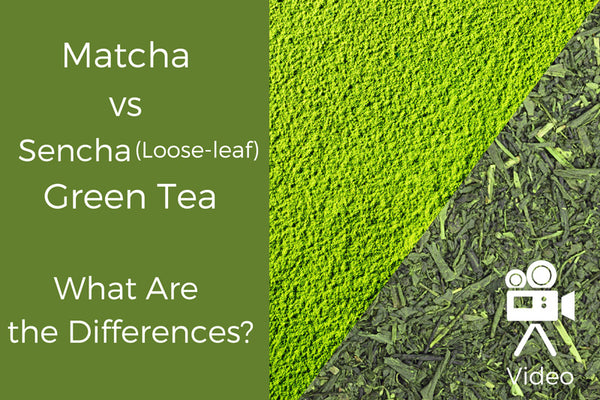
TYPES OF TEA: MATCHA VS SENCHA GREEN TEA: WHAT ARE THE DIFFERENCES?
When it comes to different types of tea, matcha and sencha green tea are two many people have questions about! Get answers in this post.
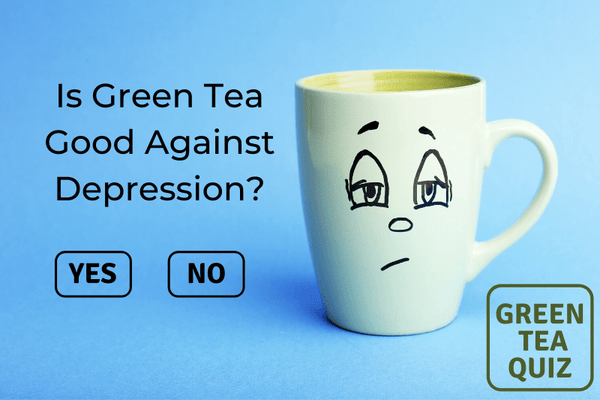
Is Green Tea Good Against Depression?
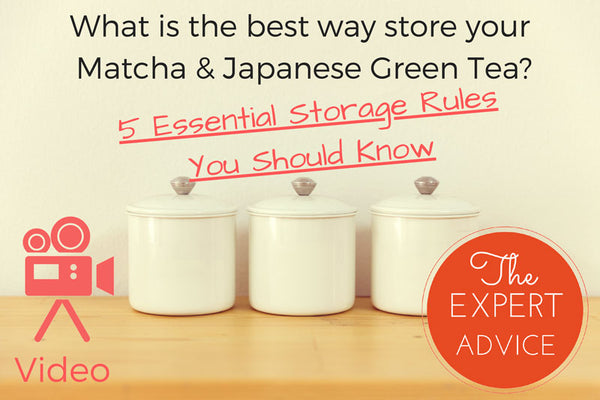
What is the best way to store your matcha & Japanese green tea?
5 Essential Storage Rules for Matcha and Japanese Green Tea
Read on to learn how to store matcha the proper way to ensure that you get the most out of this ancient elixir.




